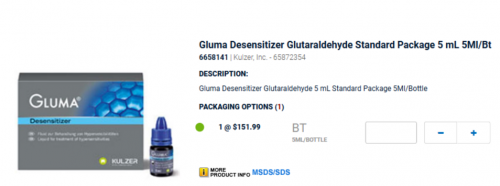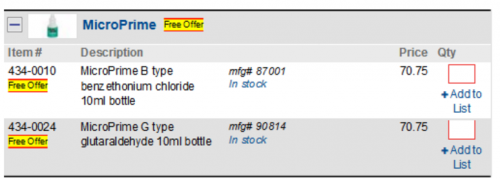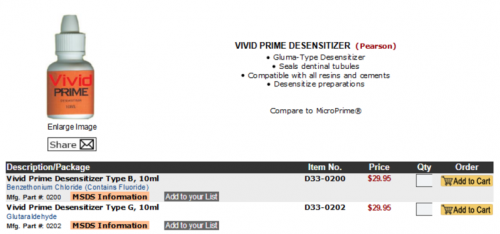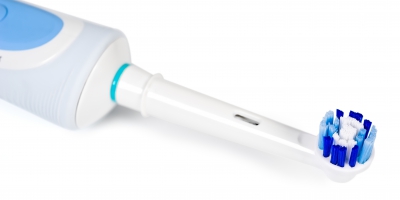A penny saved is a penny earned (Glutaraldehyde edition)
I’m here to give you a few suggestions on saving money on supplies. I’m not headed to the gray or black markets to do it, that’s simply unethical. I’m not going to suggest anything weird like washing and reusing rubber gloves, going back to zinc phosphate cement, or taking crown and bridge impressions with alginate.
However, there are plenty of opportunities out there to save money on everyday items that are simply off-patent and have been cloned, or supplies from companies (including ones in the good ‘ol USA) you’ve never heard of because they aren’t carried by the big 3 suppliers. So each week I’m going to highlight something I use in my own office and have compared to the popular version of the product many of us are familiar with.
First up: Glutaraldehyde 5% and 35% HEMA desensitizer
Heraeus Kulzer’s Gluma is the household name in this category. Dr. Rella Christensen of TRAC research has shown that two 1-minute applications of a glutaraldehyde product will effectively kill bacteria and desensitize the tooth prior to the placement of your restoration. If you’ve never used glutaraldehyde, it’s the real deal – it works! Eliminating call backs for sensitive crowns or fillings is worth almost any cost, however let’s make that cost as low as possible.
How I use it in my practice:
Before almost every cementation procedure of a crown on a vital tooth, I scrub the tooth (try to avoid contact with the gingiva – it turns it white temporarily and can irritate) with gluma 1 minute, then dry, then apply another coat for 1 minute, then dry, then put my crown on when using a GI, RGMI, or Self-Adhesive Resin Cement.
Anytime I’m using a total etch technique with my composite bonding I use the 2, 1 minute coat procedure between the etch and bond.
If using a self-etching primer + bond, I scrub the gluma in for just 1 minute before going to the primer.
Purchasing glutaraldehyde:
 At Henry Schein Gluma is $152 for 5 ML or about $30 per ML (shipping fees not included) – BOOOOOO!
At Henry Schein Gluma is $152 for 5 ML or about $30 per ML (shipping fees not included) – BOOOOOO!
The product has been off-patent for a long time now, if you are paying that you’re bleeding money one drop at a time.
Now, generics of Gluma have been around a long time. Microprime from Danville ($71 for 10 ML – $7 per ML or 77% lower cost) and Clinician’s Choice G5 are all chemical clones of Gluma. Price of Microprime shown here from Safco – a leading mail order dental supply company. Note that Safco doesn’t charge shipping for purchases over $40 so this is the all-in price.
So that’s nice, but let’s crush that and do better.
Danville now clones Microprime which is a clone of Gluma (jeez this is getting complicated…kind of like the clone saga for Spider-Man fans, or Attack of the Clones for Star Wars fans) for a dental supply company you might not have ever heard of called Pearson Dental out of California. You’re going to get to know Pearson if you read this column again because they do business with a lot of really cool small companies in dentistry that don’t work with the big 3, as well as a lot of international companies making great products.
Danville’s Microprime clone for Pearson is called Vivid Prime G and it sells for $30 for 10 ML ($3 per ML) and now we’ve hit 90% off the original gluma price.
To recap – 10 ML’s of Gluma from schein is about $300. 10 ML’s of Vivid Prime G is $30 (To be fair Pearson does charge shipping, which might run $7-9)
So if you’re a Gluma user, i just saved you $270 on your next purchase of glutaraldehyde. Remember to think of me when you’re enjoying your fancy steak dinner you just bought with these savings.


